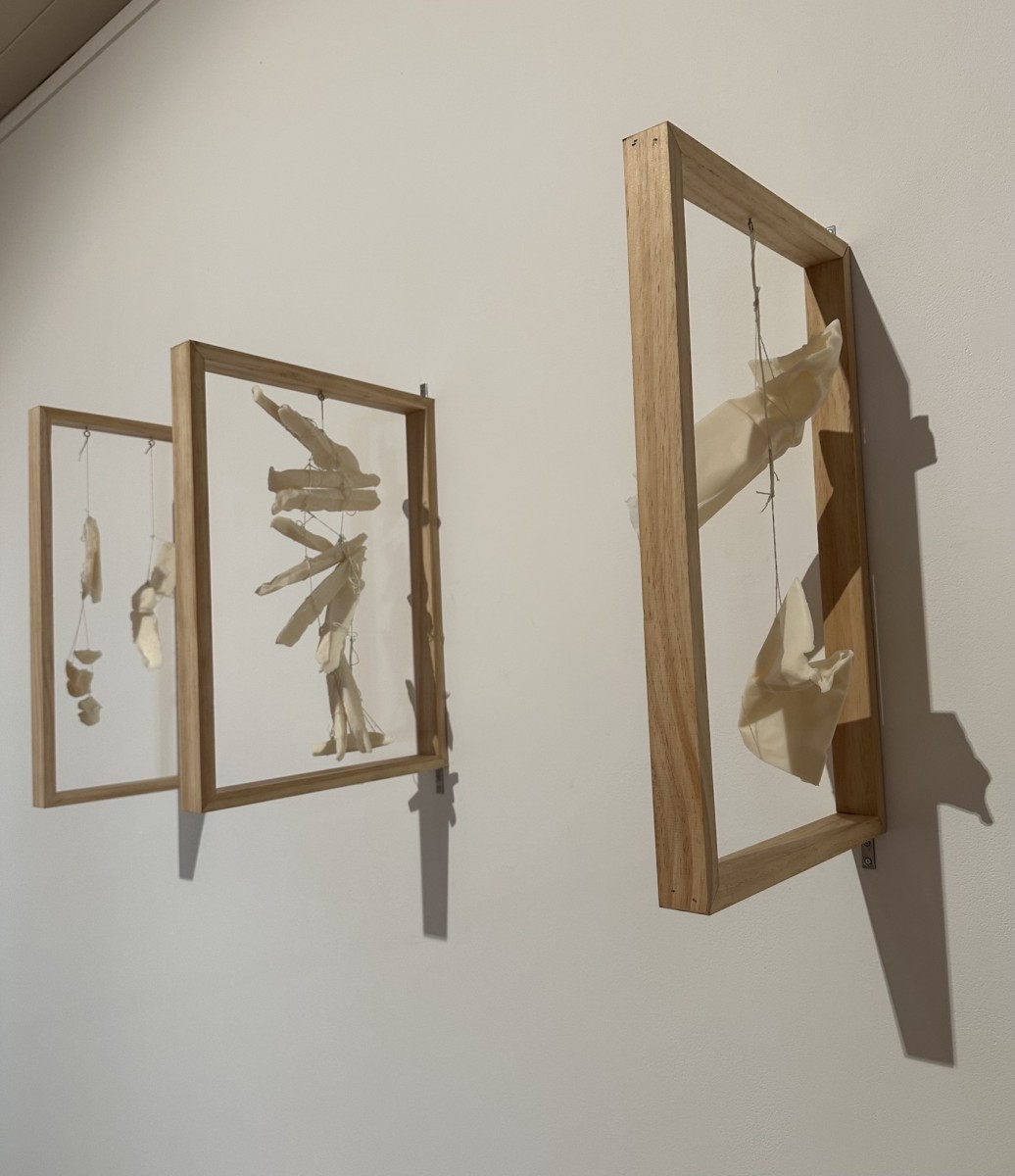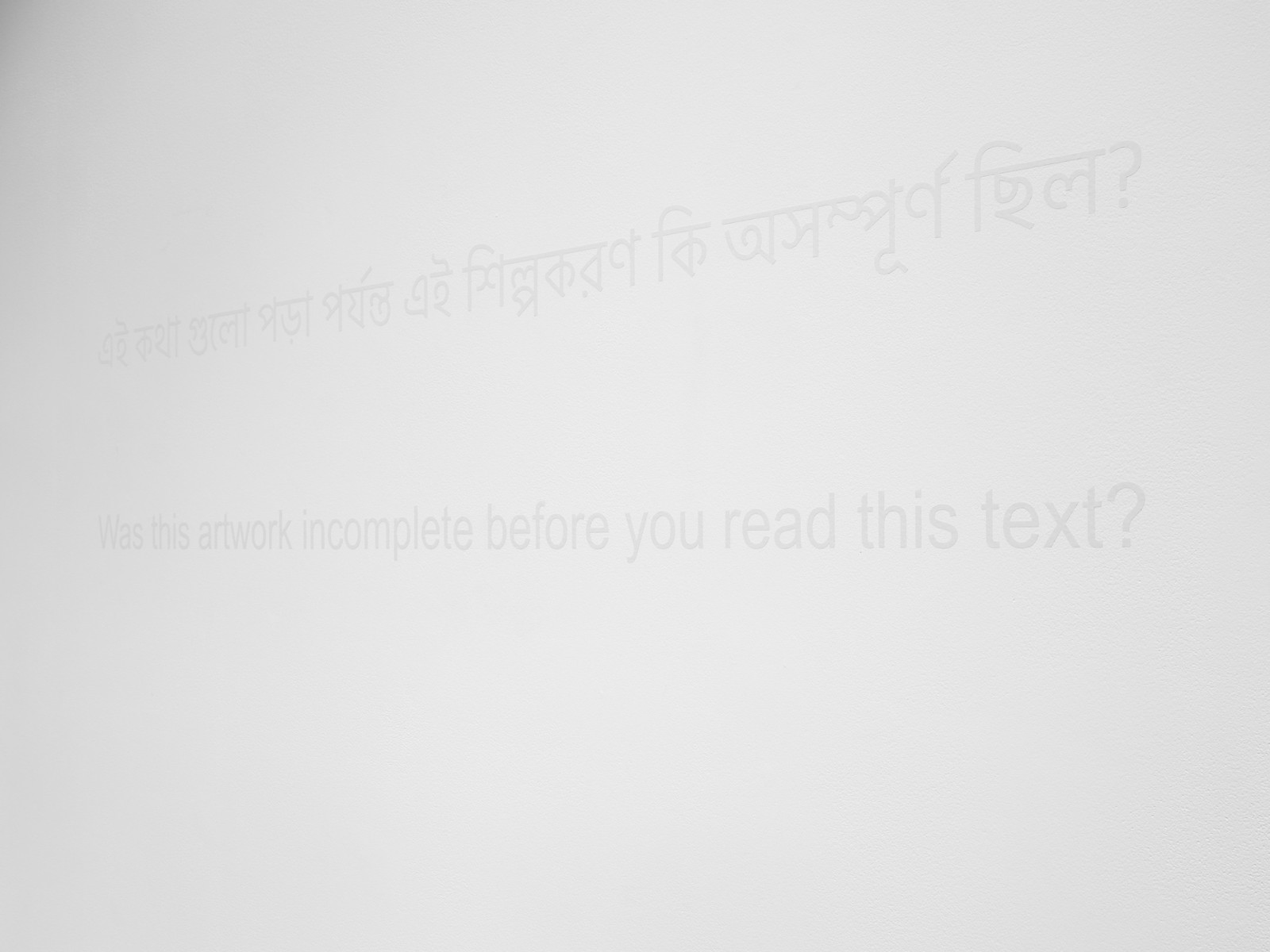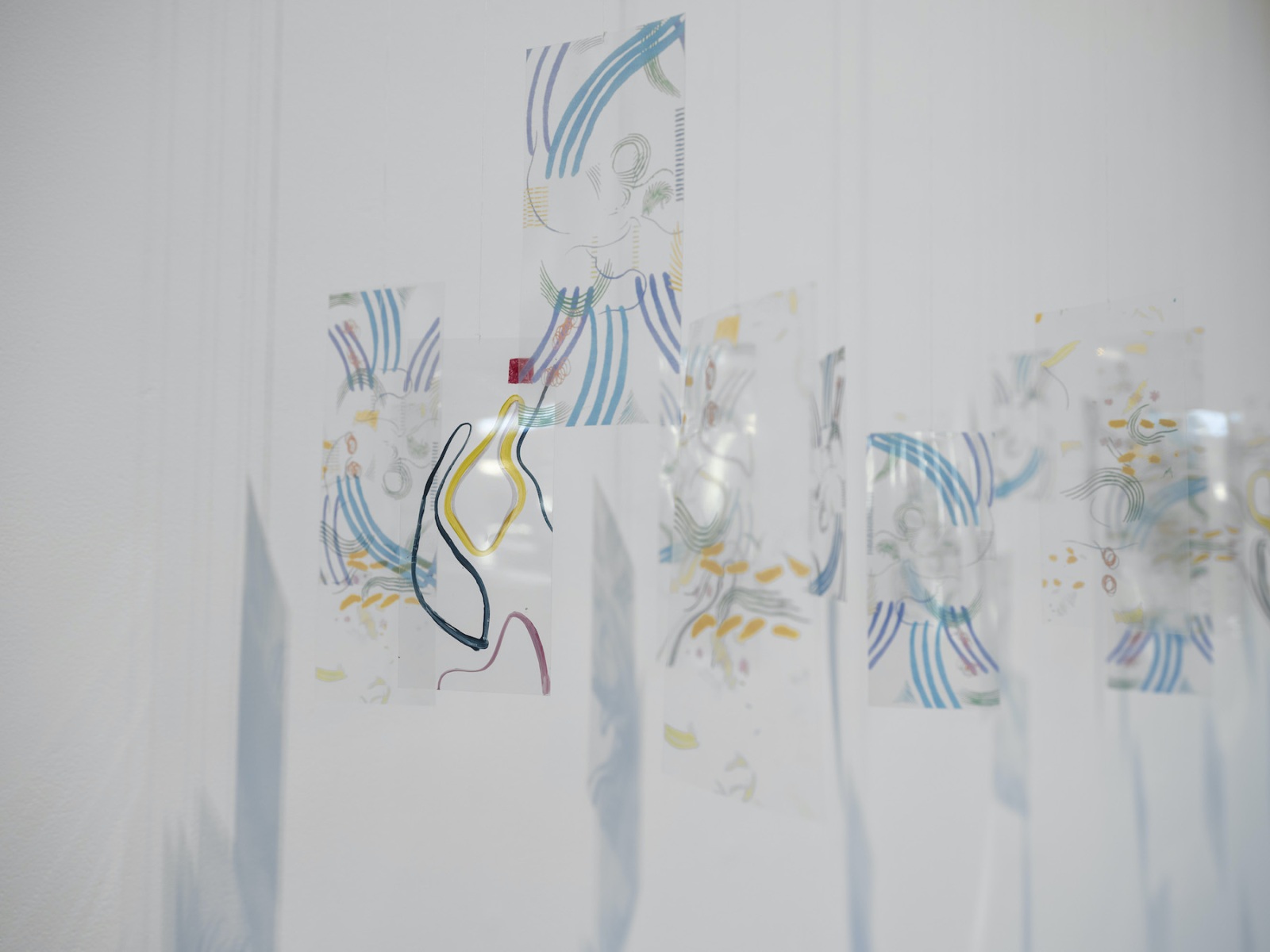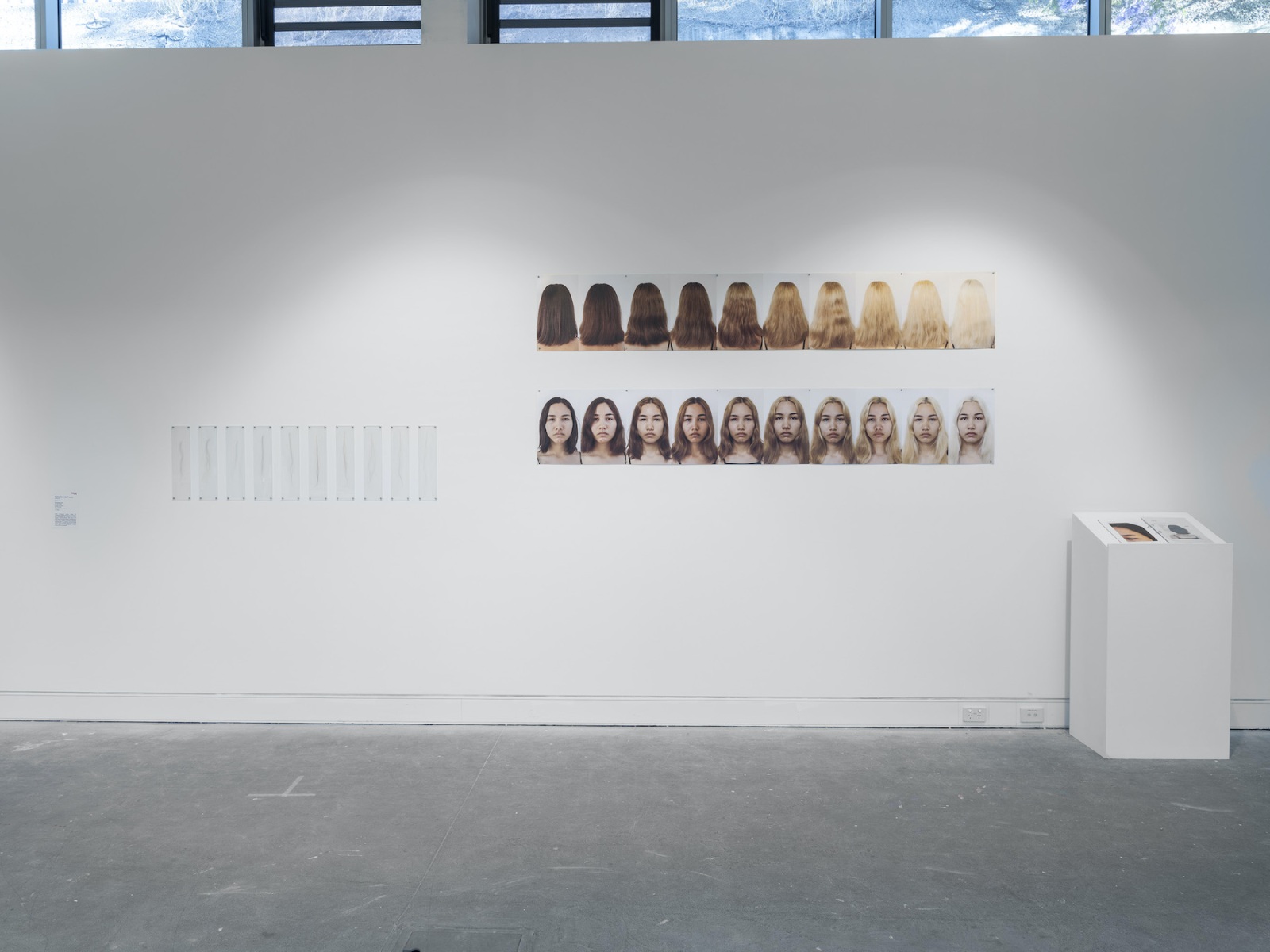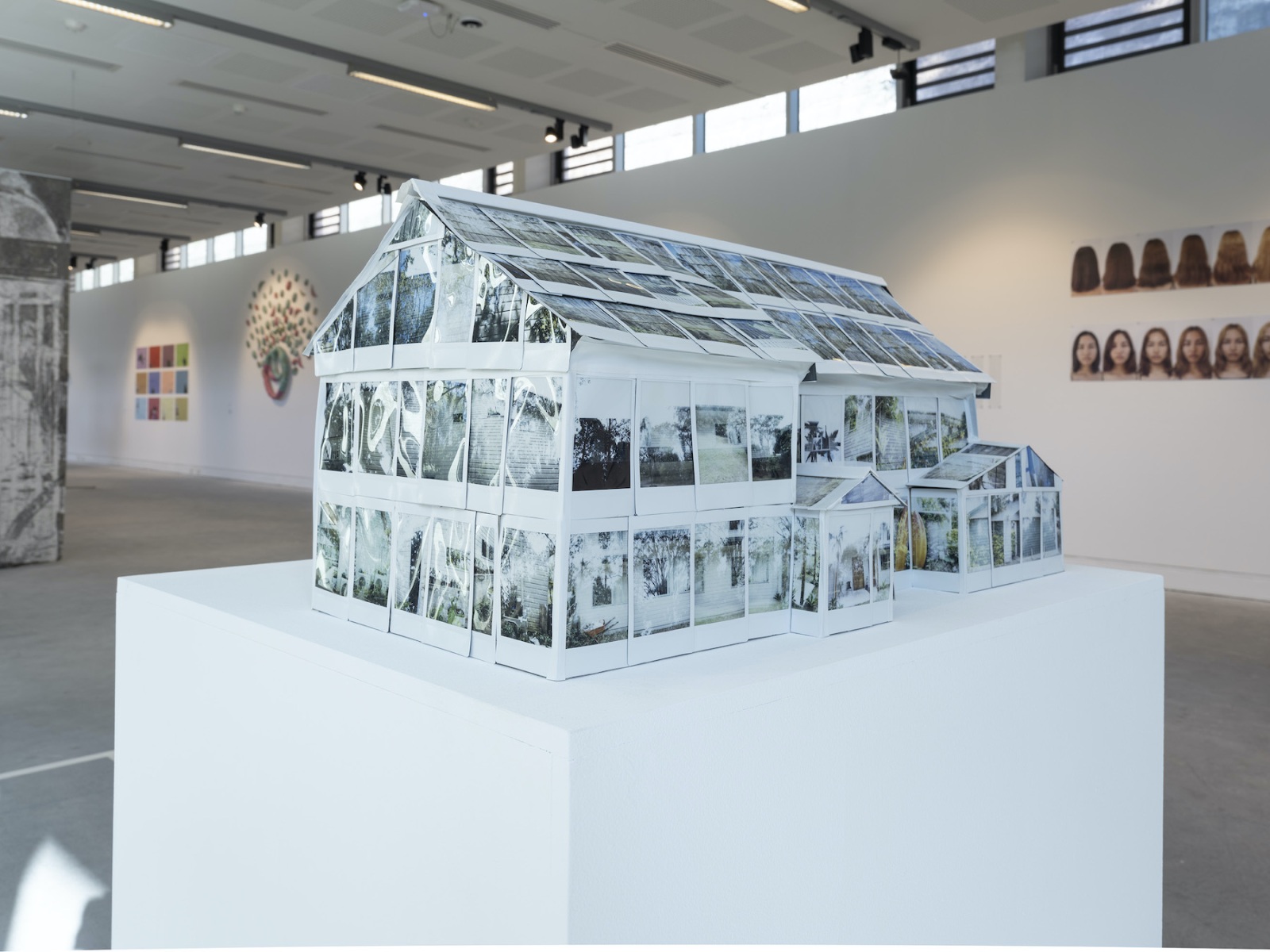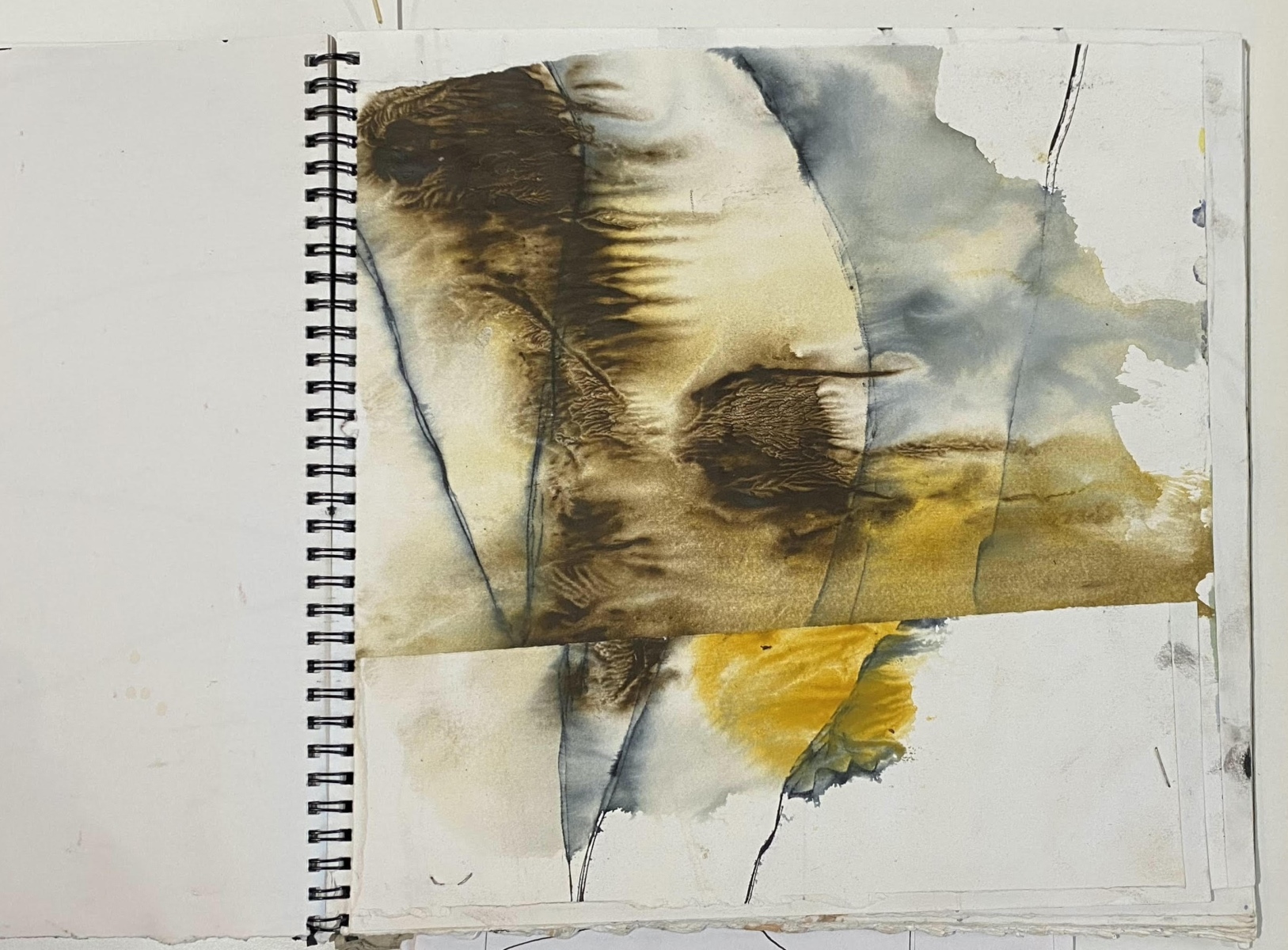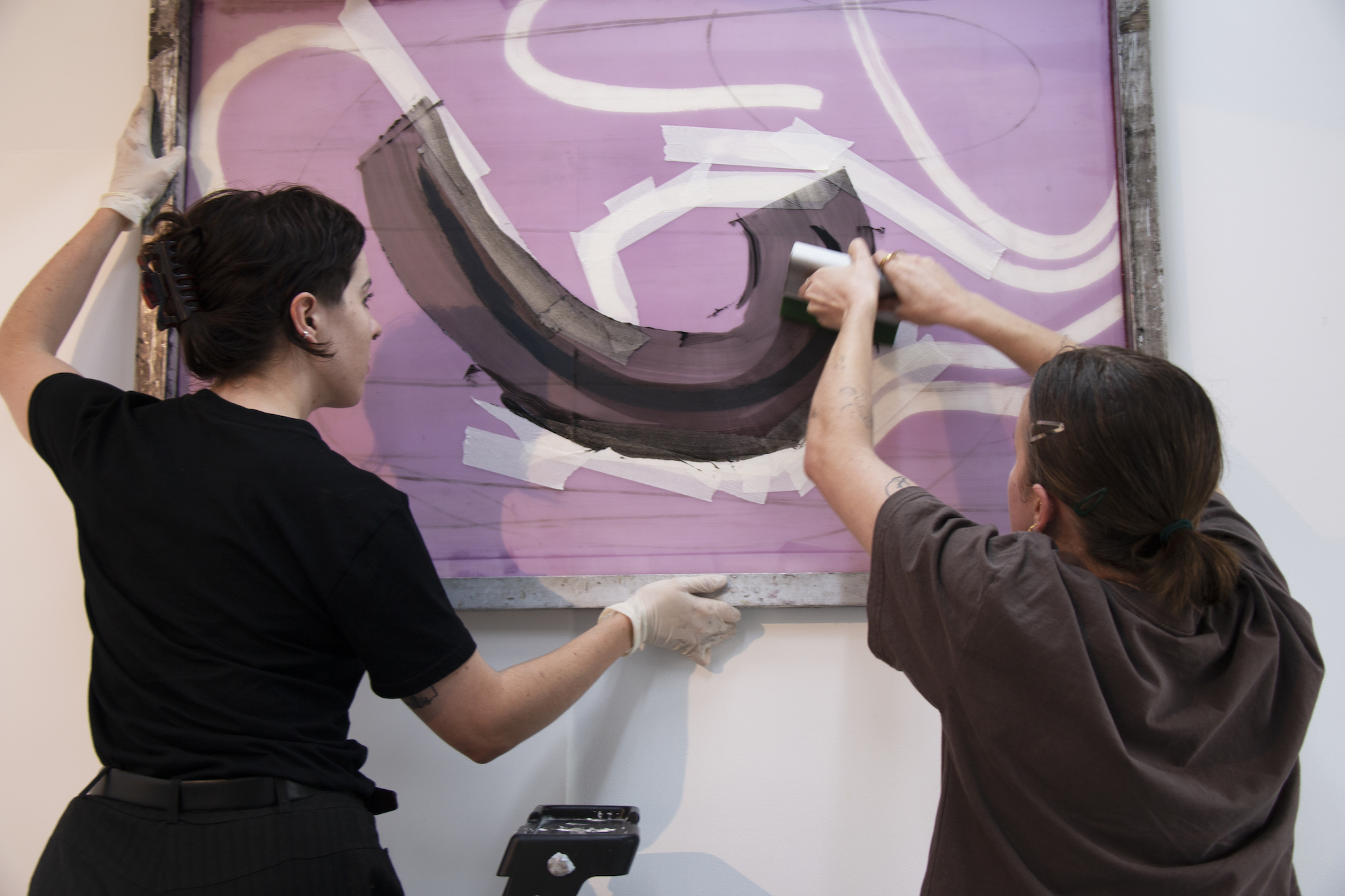Every major city has its art schools. And every art school within a city has its point of difference. What sets QUT’s apart is its very small cohort and open studio methodology. Both prioritise, and enable, close conversations between staff and students, driven by ideas rather than a predetermined art form. At QUT’s graduate exhibition—Array—all of this is on display. Recurrent threads span domestic memories; the identity politics of gender, race and culture; feminism; and screen culture. There’s also less explicit, and surprising, throwbacks to decades past. The 1960s and 1980s, for example, resurface in overly excited smiley faces (Suba Balakrishnan) and plastic bead embroidery (Lili Bryant).
The exhibition fills just two exhibition spaces. Herein one could easily mistake the freshly painted white walls, didactics branded with the exhibition title, the size and scale of the show, and of course, the works themselves, as markers of a group show in contemporary art space. Rhys Kirkham’s assemblage of used sports balls, Abbey Lucas’ participatory work of red tags, each stamped with the phrase YOUR TOUCH EXCITES ME, Amy Collins’ heap of oversized pills rendered in plaster, and Brady Cooke’s hard-edge-abstraction as sculptures, especially, would all feel at home in galleries beyond campus.[1] Looping back to my review of QCA’s graduate exhibition, they would sit easily alongside Alex Piperides’ cast bronze pool noodles, collectively oozing the coolness of their neat, formalist finishes.
Materialities are also on display here. India Brant’s decorated domestic objects, Louise Crompton’s photographs on handmade paper and Isère Mackellar’s photographs on vellum all bring tactility to the fore. In this vein, Hannah Currie’s Ever-present II recreates Australian banknotes as translucent acetate prints. Hung on threads from the ceiling, they dangle and twist slowly in the air. I’d love to see them wrought large, or in a greater number, while also recognising that this desire to equate scale with significance is an impulse Currie is working against. The artist has removed all text and figures from the banknotes, leaving behind only their decorative marks and lines. In doing so, Ever-present II observes the undervalued role of the decorative arts in everyday life. Soph Gibson’s Being—three collections of works that employ wax—is a stand-out among the materially-led works. Continuing Eva Hesse’s investigations, Gibson uses broken, fragmented and fragile wax forms variously interlaced with thread, hung within frames and neatly positioned in a line along the floor to conjure the body. These are equally sophisticated and evocative. Sarah Follent awarded Gibson the Eyeline prize.
An unexpected delight is Johanna DeClara’s Structures of Decay, which is more visually-sensual and medium-specific than her peers. In three digitally-manipulated, blacker-than-white prints, DeClara stretches flora into haunting, Surrealist-inspired forms. The resulting works are both alluring and disturbing.
Further highlights include Jessie Muir and Alisha Davenport’s engagements with photography. Muir used polaroids to both document, and then build in 3 dimensions, her childhood home. A cacophony of birdsong familiar to Brisbane suburbs emanates from the house of cards. It’s a tender ode to childhood, memories and home. Davenport’s performance, Between, involved the artist iteratively lightening her long, dark hair to a silvery blonde. In exhibition, she documents this metamorphosis in passport-style photographs, a thick binder of commentary, and a very smart display of their hair. The latter involved pinning a small selection of strands, plucked from her head at key stages throughout the dying process, behind neat rectangles of perspex. Moving from left to right the strands grow lighter. Despite their abundance in the broader artworld, conceptual and durational artworks like Davenport’s are often missing from Grad Shows. Evidencing artworld appetite for this type of work, Davenport deservedly received the NAVA Ignition Prize for this work.
Louise R Mayhew is an Australian Feminist Art Historian and the Founding Editor of Lemonade.


